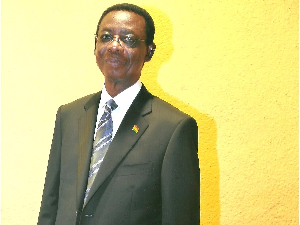President Nana Addo Dankwa Akufo-Addo has broken grounds for the commencement of construction works on the second phase of the Kumasi International Airport project.
The President said the expansion of the airport is a critical part of the government’s vision to expand the frontiers of the aviation industry in the country and to realize the dream of making Ghana an aviation hub in the sub-region.
The expansion of the airport, he said, will give Kumasi the much-needed grounds to reinforce its position as an important commercial sector in Ghana and West Africa. The second phase is estimated to cost €66.4 million.
The President noted that funding has already been secured and for which reason there must be no excuses for any delays to generate cost overruns. “Delivering of the project on schedule should be the watch word of the contractors,” he said.
The Minister for Aviation, Ms. Cecilia Abena Dapaah, said efforts will be made to ensure some of the domestic and regional airlines seeking to operate in the country will make the Kumasi Airport their hub.
The Minister expressed her appreciation to the Asantehene, Otumfuo Osei Tutu II, for the offer of a land spanning over 26,000 acres at Ankase for aviation infrastructure development.
She said notwithstanding the stipulated period of 24 months for the completion of the project, the contractors have said they will work to deliver the project in 18 months.
The idea to turn the airport in the second largest city in Ghana into an international airport was birthed in the National Transport Policy of 2007.
In December, 2017, Financial Agreements for the Phase II development of the Kumasi Int. Airport were signed between the Ministry of Finance, acting for and on behalf of government, and Satander S/A which came into effect on April 2018.
The Phase II will see extension of the runway from the current 1981 meters to 2,300 meters. This, when completed will enable the airport handle large planes that require an extended runway to land and take off safely.
A new international terminal to handle approximately 1,000,000 passengers per anum is also to be constructed as part of the Phase II of the project.
Rise in commercial and trading activities
The Ashanti Region is the most populous and one of the fastest-growing regions in the country.
Kumasi, the Ashanti (formerly spelt Asante) Regional capital has historically been an important reference for the use of Adinkra symbols and craftsmanship. With sprawling vegetation cover, the city is an important tourist destination noted for its commerce, mining and manufacturing.
Over the past two decades there has been rapid growth in commercial activities in the city, chiefly because of its ideal location in the middle-belt of the country. After Accra, Kumasi is the second-largest city in Ghana in terms of size and population.
Traders, farmers and cattle owners from Brong Ahafo and the northern parts of Ghana bring their wares to large markets in Kumasi to sell every day. A visit to the Kejetia Market, West Africa’s largest open-air market right in the heart of Kumasi, reveals a large volume of trade carried out on a daily basis.
Business News of Thursday, 7 June 2018
Source: thebftonline.com













